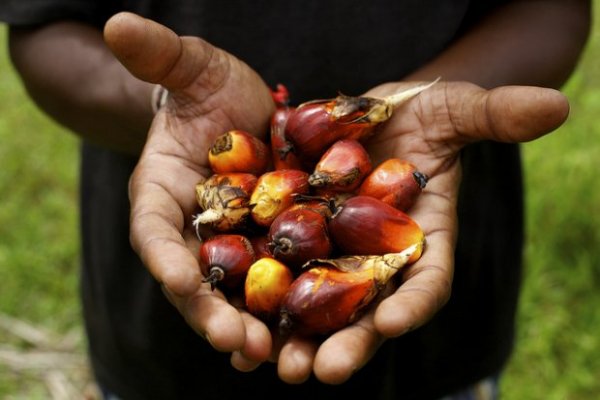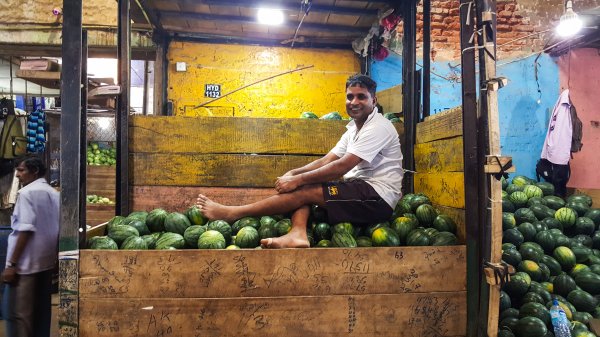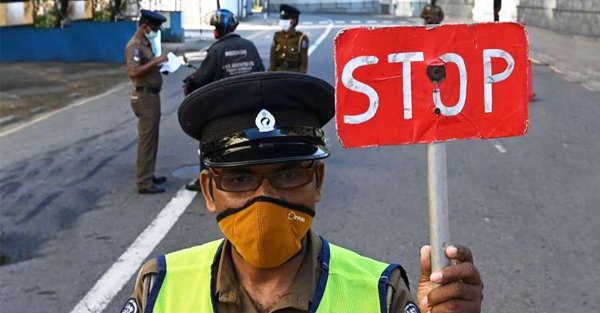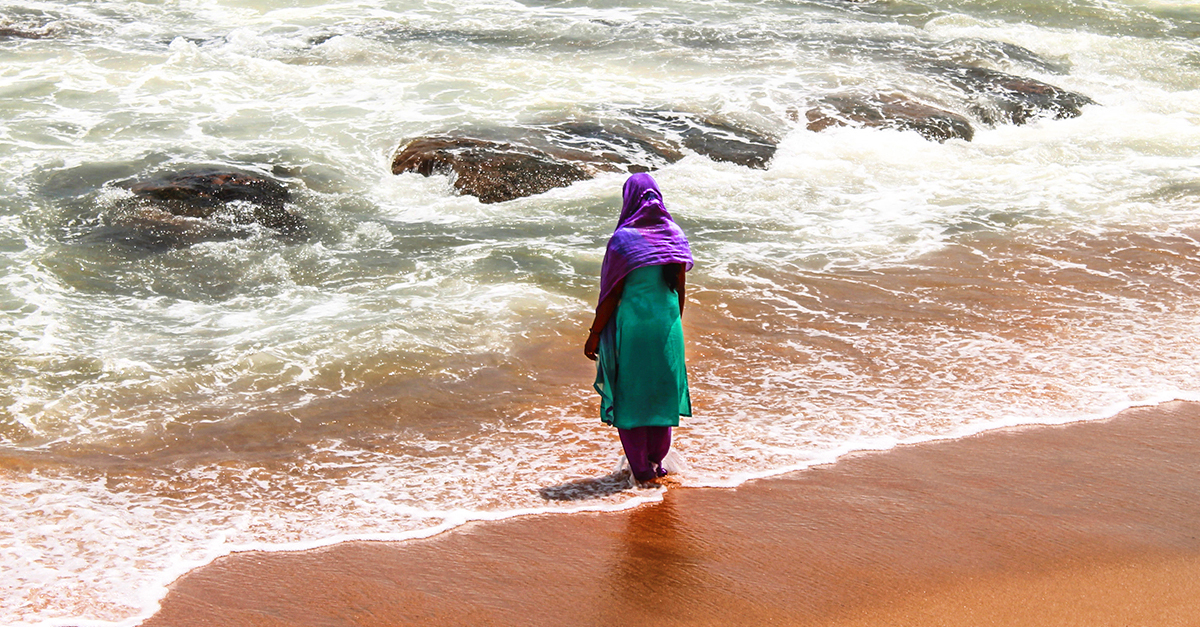
Aisha*(50), flustered and somewhat embarrassed, showed us the bag she had bought with her. It contained a large wad of cotton wool, a pink comb and other implements — all used in the process of circumcision. She was at first reluctant to speak to us, unsure of how much to divulge, but gradually relaxed.
“I was circumcised by my grandmother,” she told us. “[And] she was the one who taught me. The first time I cut a girl child was when I was 18 years old. My hands were shaking, I remember being afraid. But it was quickly over.”
The circumcision of men and women at a very young age is a cultural practice, performed by some communities predominantly in Africa and Asia. However, the act of Female Genital Cutting (FGC) or Female Genital Mutilation (FGM) is considered controversial and a violation of the rights of women and girls.
Not Just In Africa
In Sri Lanka, the practice of FGM, also known as khatna or sunnat is common among sections of the Muslim community. However, it is important to note that it is not practised by all Muslim families.
Aisha is one of a number of women who, when called upon by a family with a newborn baby girl, arrives to carry out the act. She believes that the age-old tradition will instil modesty and curb a girl’s sexual desire — all for the sake of spiritual purity.
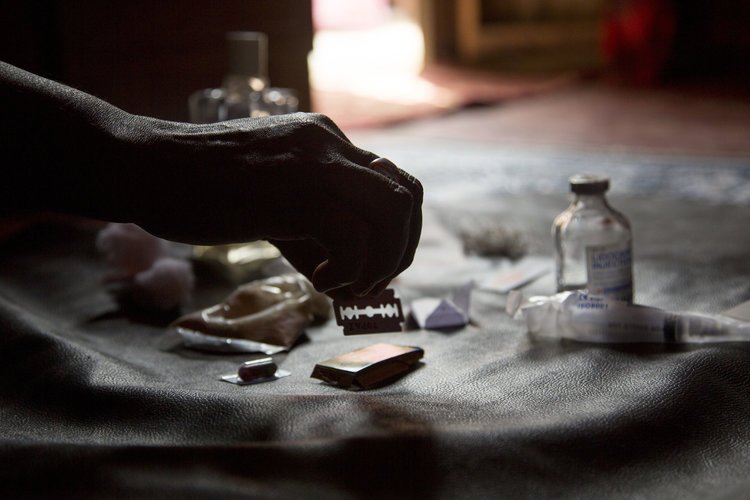
Ostha Maami : Bad Reputation
Fathima* (48), one of Aisha’s many relatives was also at home, when we visited her. The two women are well known in their communities for circumcising, although Aisha circumcises girls, and Fathima, only boys. Fathima is also vehemently opposed to the circumcision of girls, thinking it unnecessary.
Although a traditional practice, FGM is performed behind closed doors, only gained notoriety in Sri Lanka in 2016 after the publication of a series of anonymous testimonials from 15 women of the Dawoodi Bohra Muslim community who had undergone the procedure. As a result of the revelation, many practitioners — colloquially, referred to as ostha maami — have now gone underground. A 2018 circular by the Ministry of Health prohibiting medical practitioners from carrying out the surgery on girl children or women made it even more difficult for ostha maami’s to perform their services now.
Aisha also feels the ‘service’ has gained a bad reputation overall — and not just as a result of the controversy around the act, but also because the role of a ‘community circumciser’ is now seen as a low-class occupation by many.
“The last baby I circumcised was in 2018,” Aisha said. “My children demanded that I stop doing this. Just because my mother did it, doesn’t mean that I should,” they said.
Fathima also feels that FGM has more or less become a business, in which poor families are swindled out of their money.
“Many of the people who carry out this procedure ask for a lot of money,” she said. People get scammed a lot. Sometimes you have to pay gold in weight of the child’s hair that is shaved. If it’s a girl, you have to pay in gold, if it’s a boy, then money. In my case, when I’m asked to do it, I take whatever that is given.”
“People cannot afford it,” she explained further. “They scramble to pay and give away the only gold they have. Some people think that they must do it, so they get loans and get into debt trying to find the money to circumcise their child. It has become a business.”
“A Very Simple Thing”
“I didn’t know of this till my daughter was born,” one woman wrote in the anonymous testimonies that were published in 2016. “My mother said she must be sunnat. I told her only boys get sunnat. She said no, girls also. Then she brought down a lady doctor and she came and cut. My baby cried a lot.”
FGM is performed on children of varying ages, the youngest between 9 to 40 days old and the oldest about seven years. Aisha claimed she has circumcised over 10 adults. The number of babies she couldn’t recall—she has never kept count.
“The baby’s head is shaved first and [she] is bathed,” she said of the process. “She is then put into a tub of water, usually the one they bathe the baby in. We place the blade between her legs and swiftly make the cut; it’s more or less a single straight line [on her clitoral hood],” she said, drawing a vertical line in the air in front of her in demonstration.
“We use the water to wash the cut clean. Thereafter, we put eau-de-cologne on it and swab it with cotton. That’s it. It won’t bleed after that. No problem. It’s a very simple thing.”
Many believe—or are made to believe—that the practice is mandatory and that Muslim girls must be circumcised. However, scholars and anti-FGM lobbyists argue that there is no supporting evidence in religious text.
Aisha herself, while seeming to believe in the underlying morality of female circumcision, did not feel it was as mandatory as claimed, despite engaging in the practice. “Islam gives prominence to cleanliness, that was what my grandmother told me. So the cut is made to purify. It makes the girl humble and she learns respect,” she said.
“I learnt the practice from my mother-in-law,” Faithima interjected at this point. “But it was my grandmother who explained it to me first. [According to her, if the labia [minora] of a woman is not cut, it will stretch. [But] this will not happen when you’re circumcised.”
A number of other reasons have been out forward as justification for practicing FGM in Sri Lanka—some even believing circumcision improves the appearance of the genitalia, increasing the male partner’s interest. And yet, perhaps the most incredulous and least factual of these is the belief that FGM is medically beneficial.
Tradition vs Morality
While there is said to be compelling evidence that male circumcision has health benefits, female circumcision has no known health benefits. In fact, the World Health Organisation (WHO) recognises the act of female circumcision as procedures that intentionally alter or cause injury to the female genital organs.
There is also evidence that these procedures can cause severe bleeding and later lead to problems with urinating, cysts, infections as well as complications in childbirth and an increased risk of newborn deaths.

However, supporters of the practice have spoken extensively on what they perceive as the WHO’s hypocritical double standards against FGM, saying it was being selective about not implementing the ban on male circumcision, and also turning a blind eye towards genital cosmetic surgeries.
As a solution, supporters of FGM have suggested the procedure should be medicalised — carried out by medical professionals in a sterile environment, arguing this would bring about a win-win situation, ensuring the safety of a person being circumcised while respecting religious and cultural tradition.
Lobbyists of the pro-camp, while recognising the harm in some forms of the practice, have suggested that authorities ban Type 2 and Type 3 FGM, which cause long-term harm by altering the genitalia completely, but permit Type 1 and Type 4 which make an insignificant cut, that has no long term effects, if carried out by medical personnel.
Studies have also shown there is a lack of knowledge about the practice and taboos around talking about women’s issues that also hinder progress. A recent study by the Family Planning Association of Sri Lanka (FPA) and the International Planned Parenthood Federation (IPPF) revealed that while conversation on FGM is evolving there is still a need for more space to navigate the complexities of the subject.
Aarefa Johari, co-founder of Sahiyo, a non-governmental organisation advocating an end to the practice of FGM, said that despite the odds, Sri Lanka has shown great promise in the battle against FGM.
“A lot has taken place since 2016, for the better,” she said. “The issue has truly come out in the open, activists have worked hard to collect and curate stories from survivors and take it to the necessary government representatives. However, the government is yet to take a firm stance,” she said.
While many countries have criminalised FGM, Johari does not believe that laws alone will end the practice. “To change a social norm you need to work with communities on the ground, and convince them rather than coerce them to abandon the practice,” she said.
But Aisha, resistant to the change taking place around her, has resorted to leaving matters in God’s hands. “The right thing will happen in the end,” she said. “We are not scholars or scientists to tell what is right or wrong. I have stopped this but many families still continue this practice. But if it is wrong, it will stop.”
Fathima is less pliable and is adamant that the practice must stop.
“I don’t believe there is any use for this practice,” she said. “It’s the community that pressures families into continuing this. Why is this necessary? This is wrong but they still do it,” she said.
